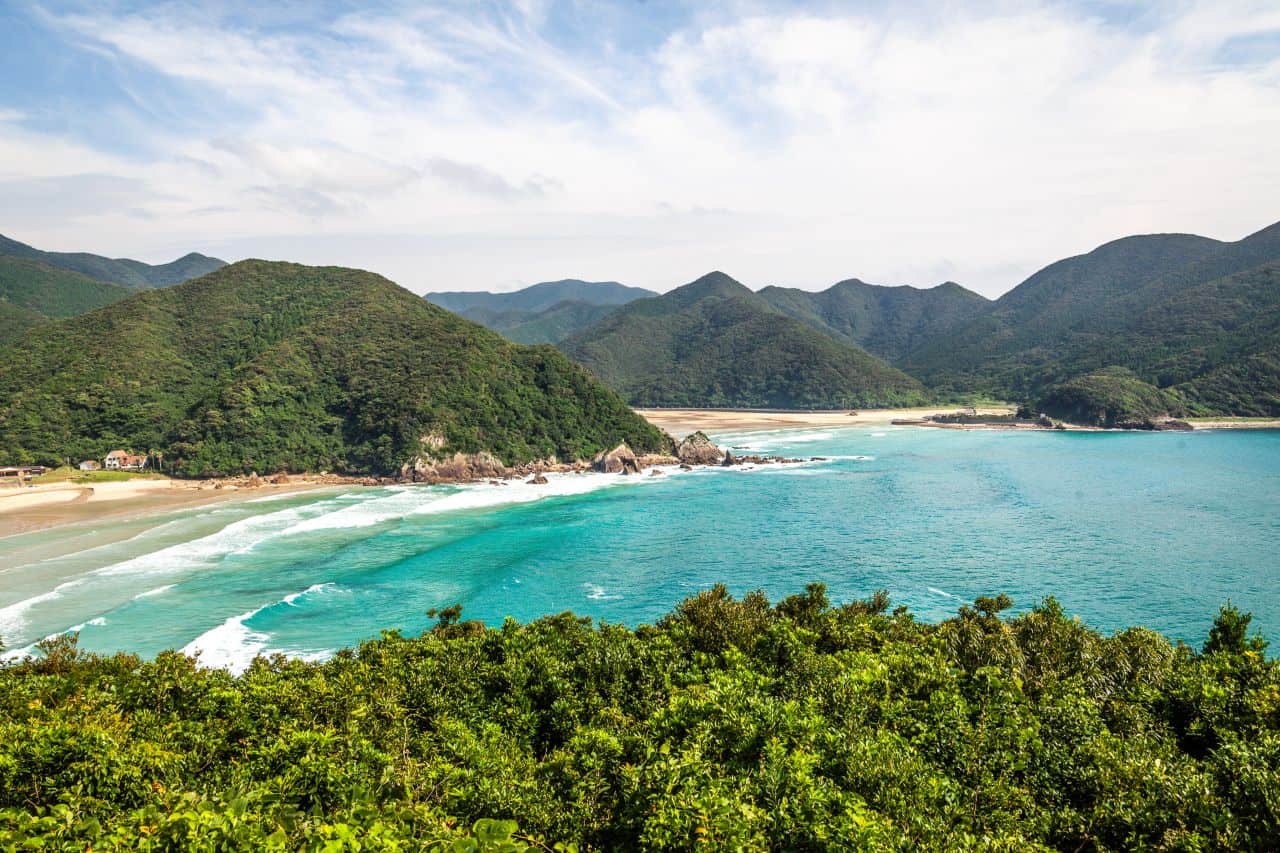As I approached Fukue Island’s port aboard the Jetfoil from Nagasaki city (長崎市), I kept wondering what I would find. While I was eager to discover the gorgeous beaches and lush green scenery that made the Goto Islands an increasingly popular tourist destination, I was also intrigued by its tumultuous and fascinating Christian history. Fukue Island (福江島, Fukuejima), the largest among the five islands that form the Goto Archipelago, is home to a wealth of breathtaking sceneries as well as an extraordinary cultural heritage, which I had the pleasure to discover over the course of 3 days.
Diving and Snorkeling on Yaneo Island
My trip started with the most exciting activity: a chance to experience what diving is like for the first time! Goto City’s Coordinator for International Relations staff member, Olivier, met me at Fukue Port as my guide during my visit and then headed again to the Jetfoil Pier where Goto Diving Lagoon’s boat was waiting for us. It was only a short ride from Fukue port to Yaneo Island. During this time, we discussed the activity with the instructors while sitting on the deck enjoying the sights and the sea breeze.
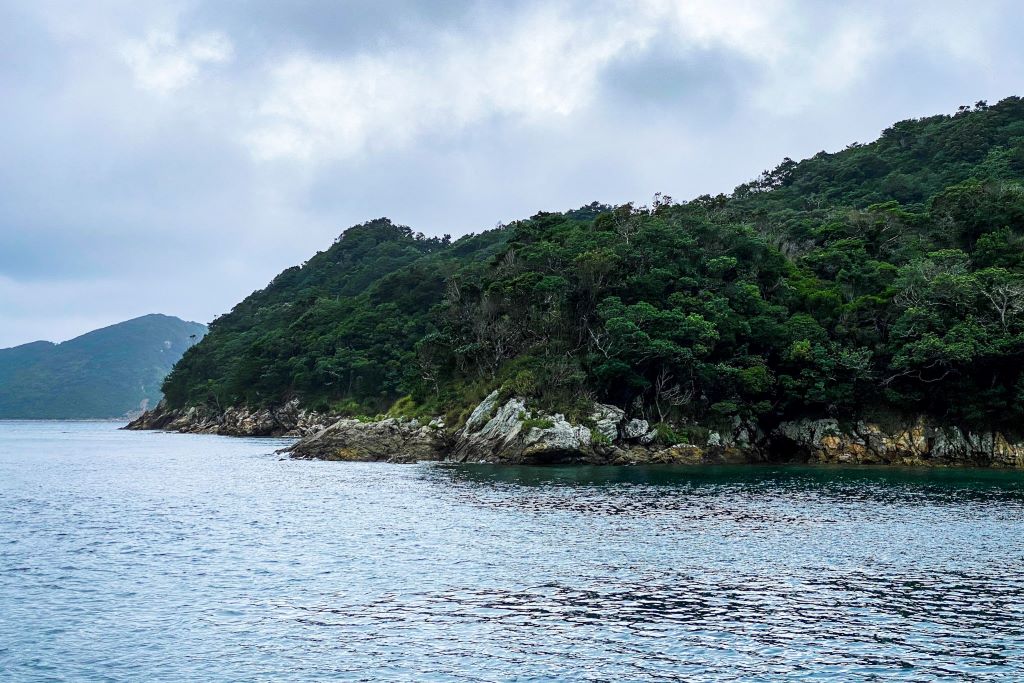
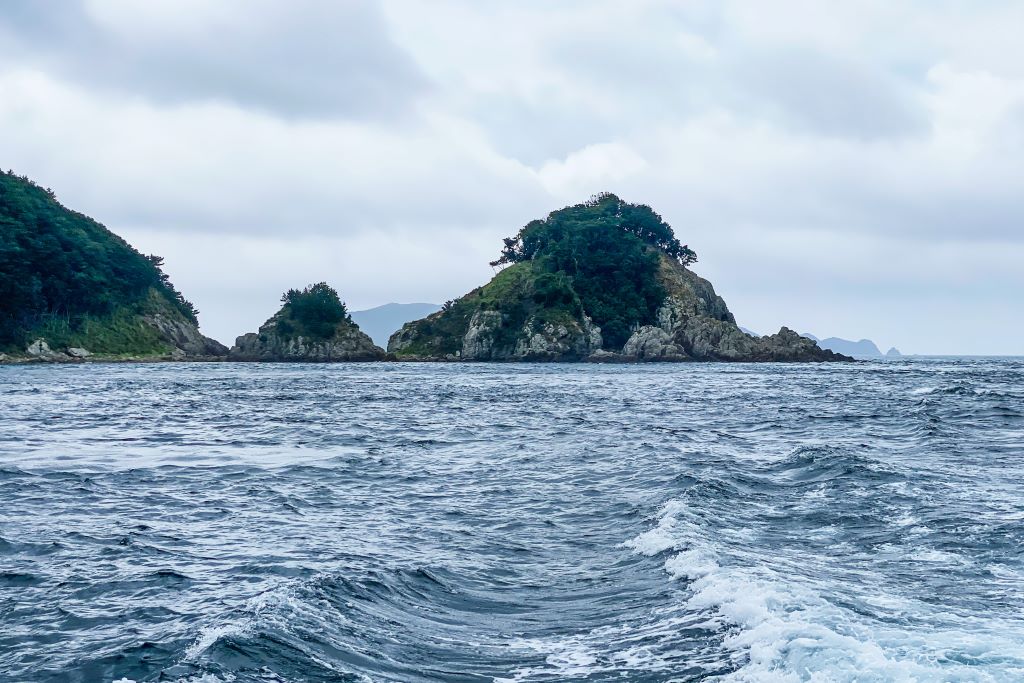
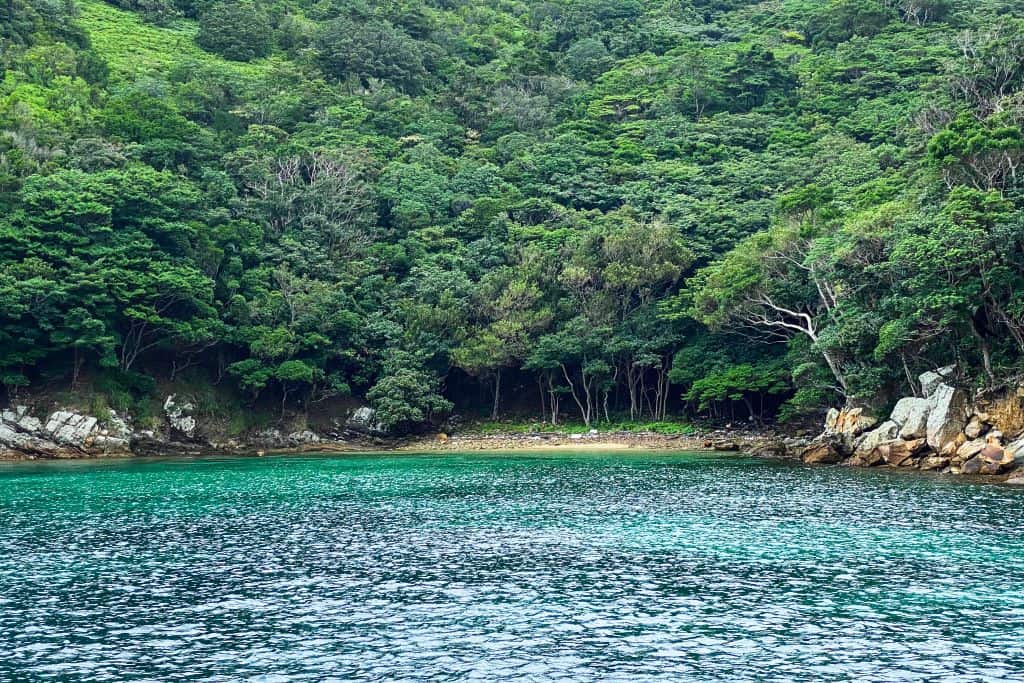
The only thing clouding my excitement was the weather, less than stellar at the time and likely to get worse, according to the forecast. So there I was, crossing my fingers in hopes that the rain would be delayed long enough to carry out the plans for the next couple of hours. And yet, even under a grey sky, the lush archipelago landscape and its bright turquoise waters were so distinctly beautiful that I kept wondering how stunning it had to be during optimal weather conditions. As I was voicing my thoughts, the instructor chimed in about how this was the perfect setting to go into hiding, referencing the hidden Christians that took refuge in these islands running away from Nagasaki during Edo Period. Certainly, remote and secluded, and somehow still like a small piece of paradise.
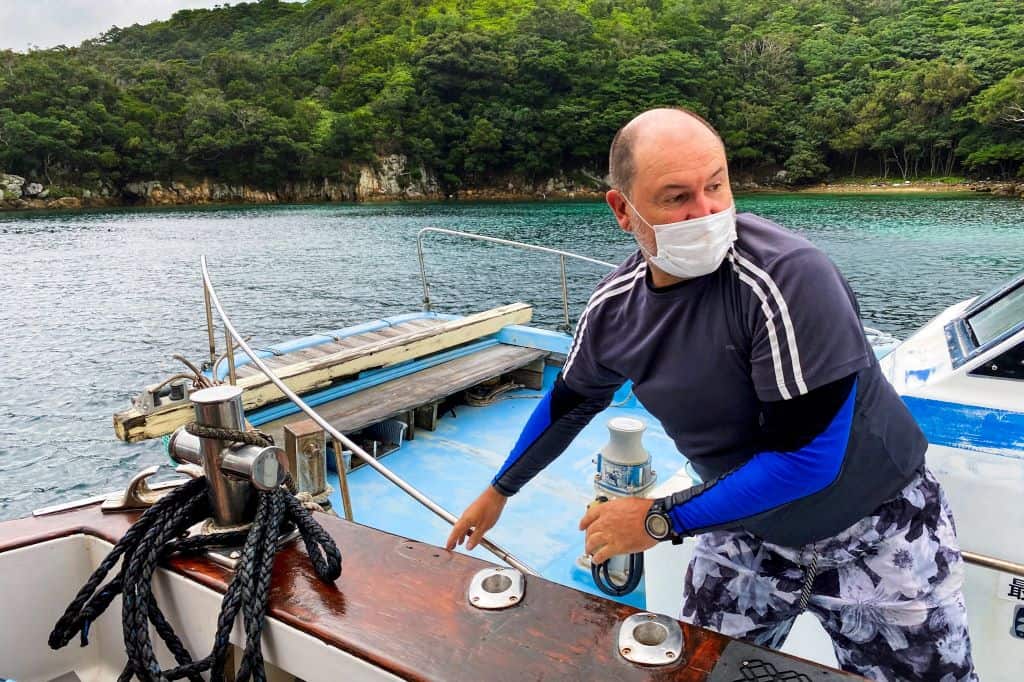
Once we made it to the small northwestern bay of Yaneo Island, we started snorkeling freely around the area in the crystalline water among dozens of small colorful fish. Olivier shortly joined in on the fun, bringing some food so we could feed the little sea creatures.
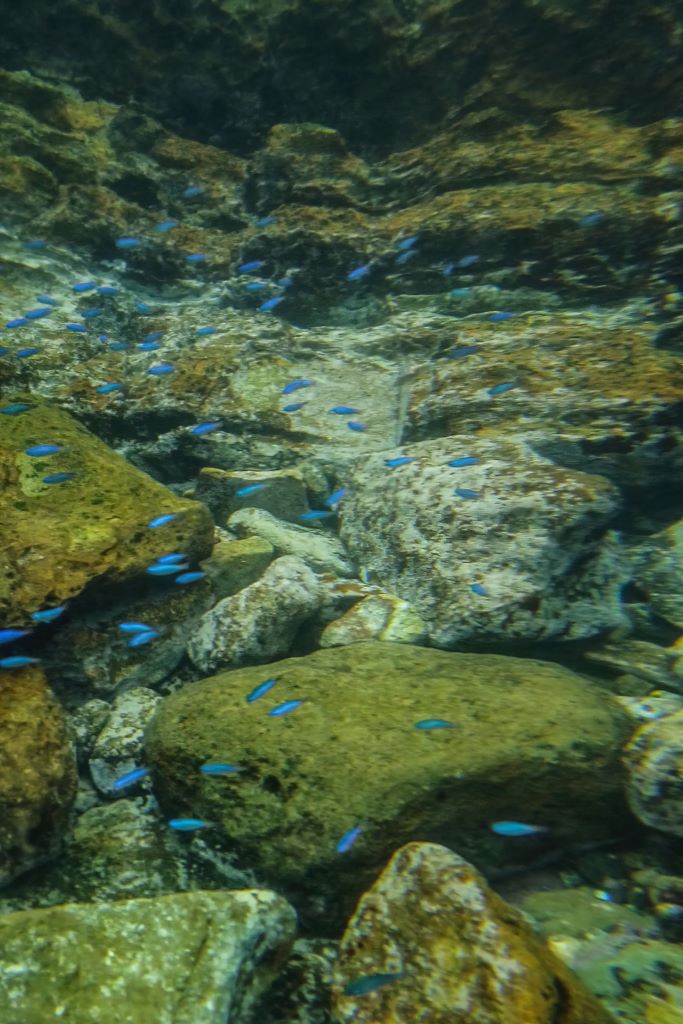
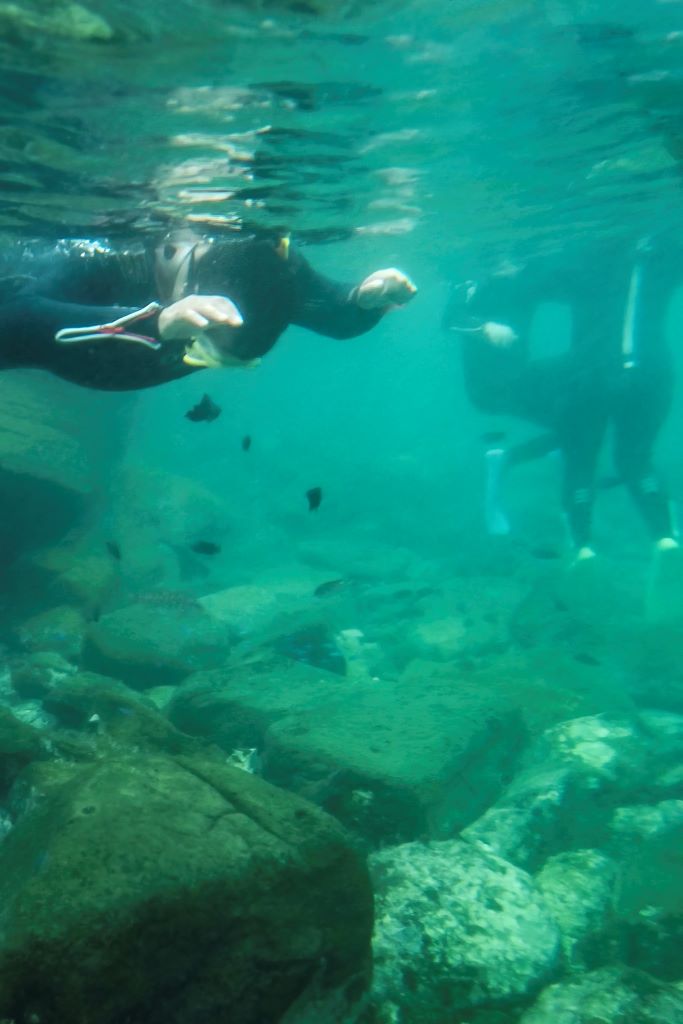
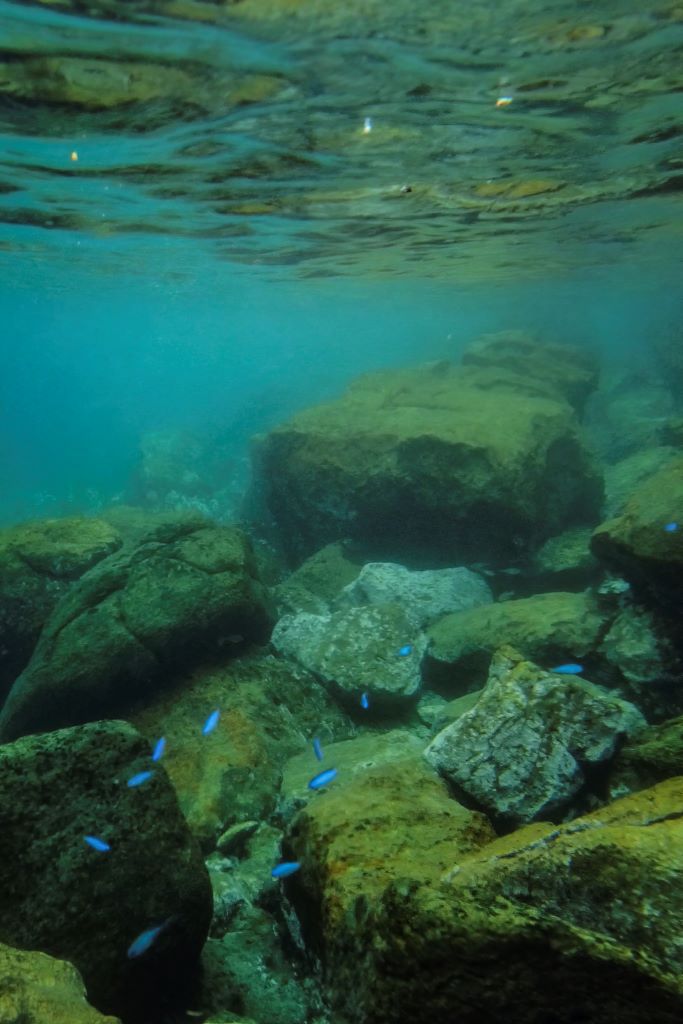
I had plenty of snorkeling and underwater swimming experience but the diving was unexpectedly different. Thanks to Michael’s patient guidance, my initially clumsy immersion attempt was smoothed out and I was able to get mesmerized by the whole new world that unfolded before me. An unforgettable experience that seriously made me consider getting licensed as a diver. But that was just the beginning, it was time to continue exploring Fukue.
Miiraku Peninsula, a Cultural and Historical Gateway for All of Japan
Risking death, I go to the sea. I have already left the furthest edge of Japan behind… These were the words attributed to Kukai, the influential Japanese monk who was among the members of the 16th Japanese envoy to Imperial China. The Jihongai Monument in the northernmost tip of the Miiraku Peninsula is a tribute to this historical episode and a reminder of the great role of this small region when it came to shaping the Japan we know today.
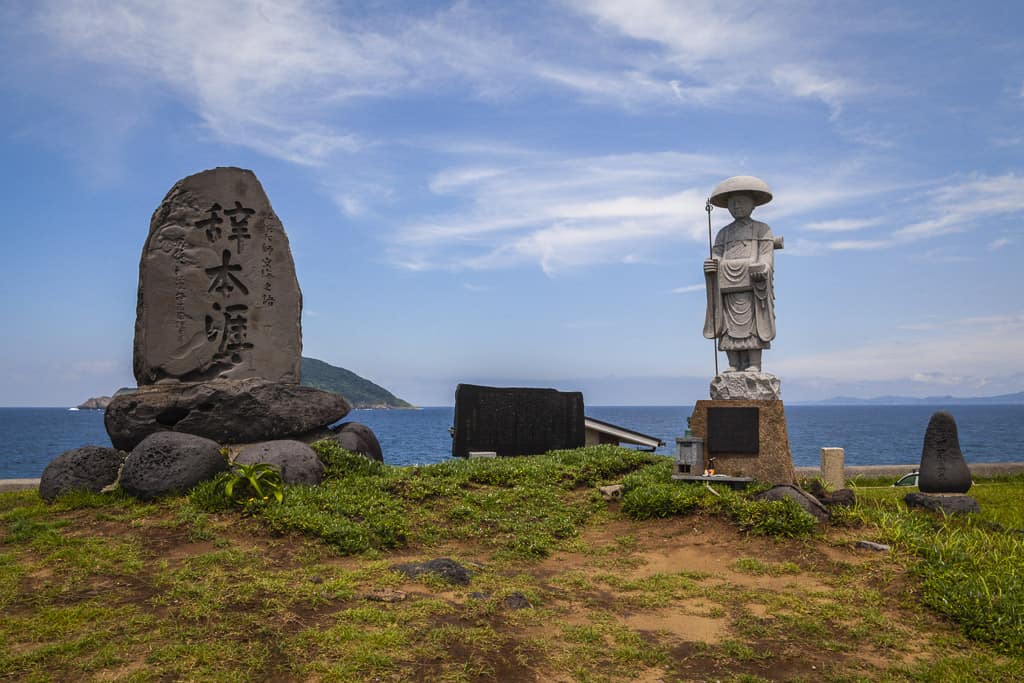
Shochu and Regional Pride of Goto
And as with many things that started in this region, Shochu was also a product of cultural exchange. Introduced in Japan from China through Okinawa and Kagoshima in the 14 century, the Goto archipelago was likely among the earlier locations where this quintessential Japanese alcoholic beverage started to be brewed. Among the companies carrying the torch of tradition in this corner of Fukue Island, there’s Goto Retto Brewery, a small local company that prides itself in crafting Shochu with only local ingredients.
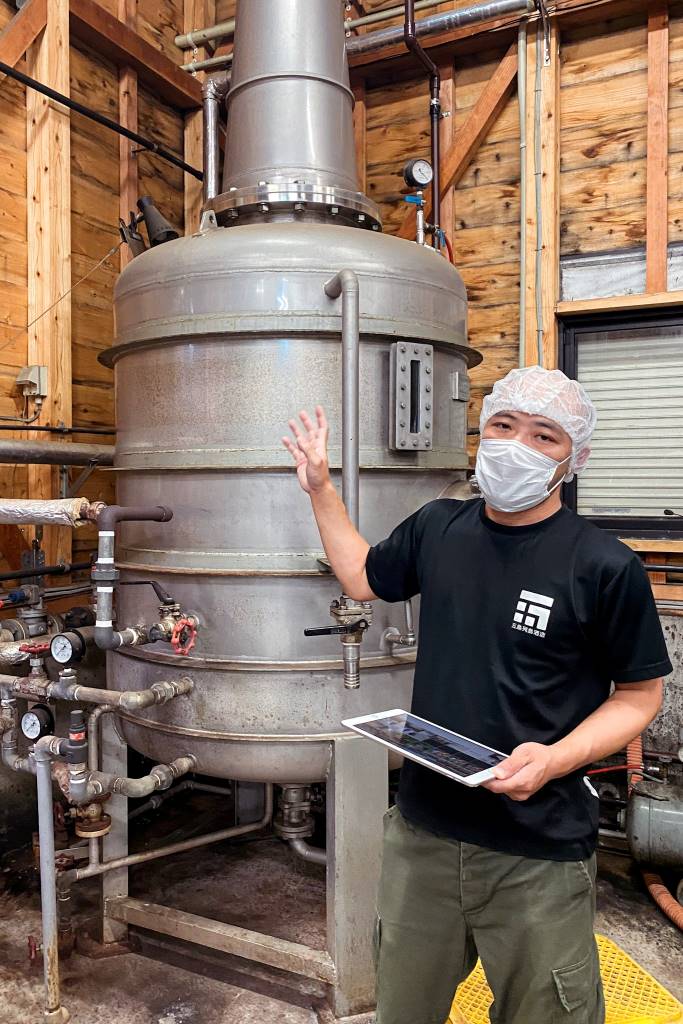
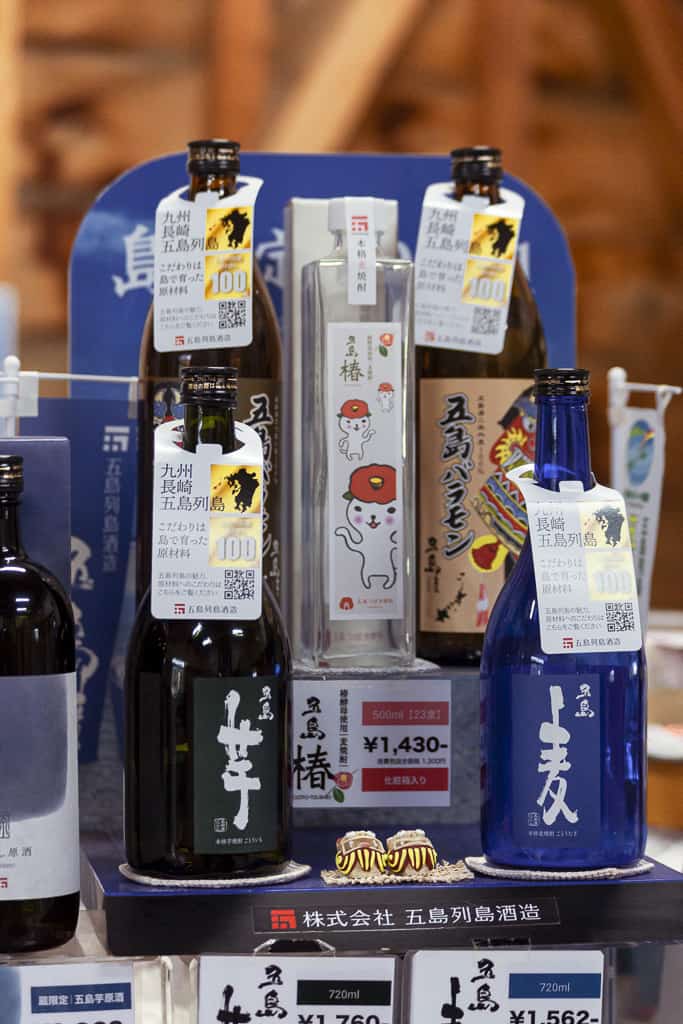
This choice isn’t just to ensure top quality, it’s also a strong desire to give back to their own community. “We want to create demand for local products, in order to stimulate the local economy and create jobs for local people,” explains Hikaru Hamasaki, who guides Olivier and me through the production process. A choice and a strong commitment that’s paid off with the company earning a good name both in national and international competitions.
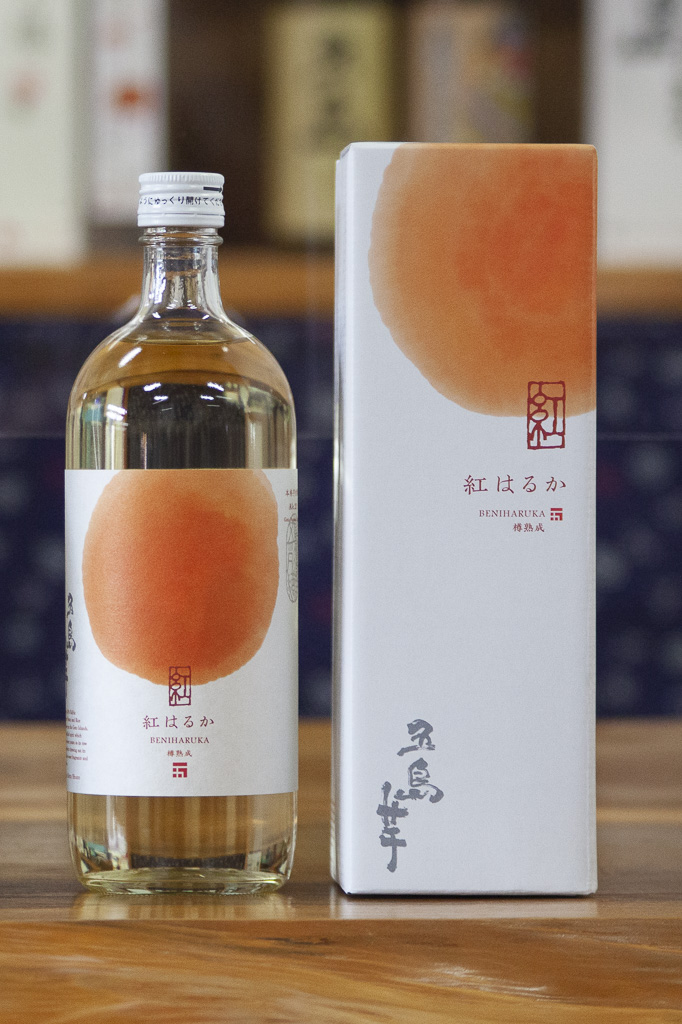
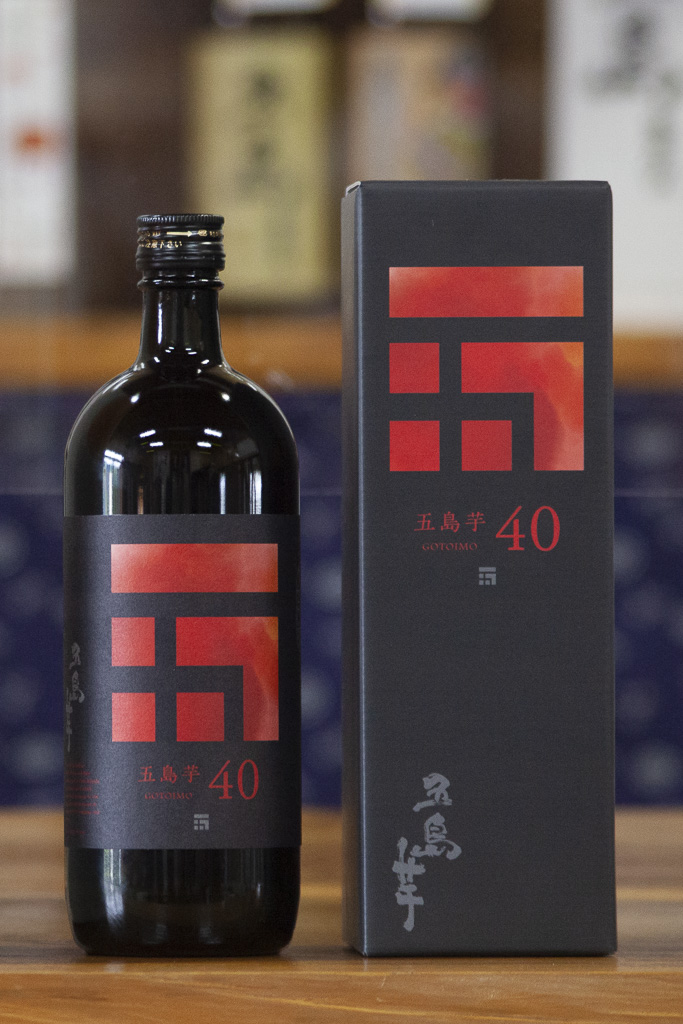
During the visit, all the brewing steps are explained, as well as the differences between mugi shochu and imo shochu, distilled from barley and sweet potatoes, respectively. These are the most typical types of shochu commonly found in Japan. But the best part came at the end when I was offered to taste the main lineup of their products. I’m no shochu connoisseur but even I could tell this was really something else, and an excellent candidate for a really special omiyage back home. The brewery shop also offers a small selection of local crafts and delicacies to round up the shopping for prospective visitors.
As a side note, the brewery is conveniently located in front of the Tourist Information Center, which is a great spot in its own right to learn more about local history and to get souvenirs and local products.
Stained Glass Crafting Workshop with Soul
Yumiko Hamasaki’s warm and sweet smile greets us as we enter 538 Stained Glass Studio, only 5 minutes away by car from the brewery. This is the workshop responsible for the stained glass in the Miiraku Church, as well as some other churches on the island. A craft introduced for the first time in Europe in the 19 century through Nagasaki’s Oura Cathedral, stained glass strongly symbolizes another facet of the island’s identity, linked to its Christian heritage.
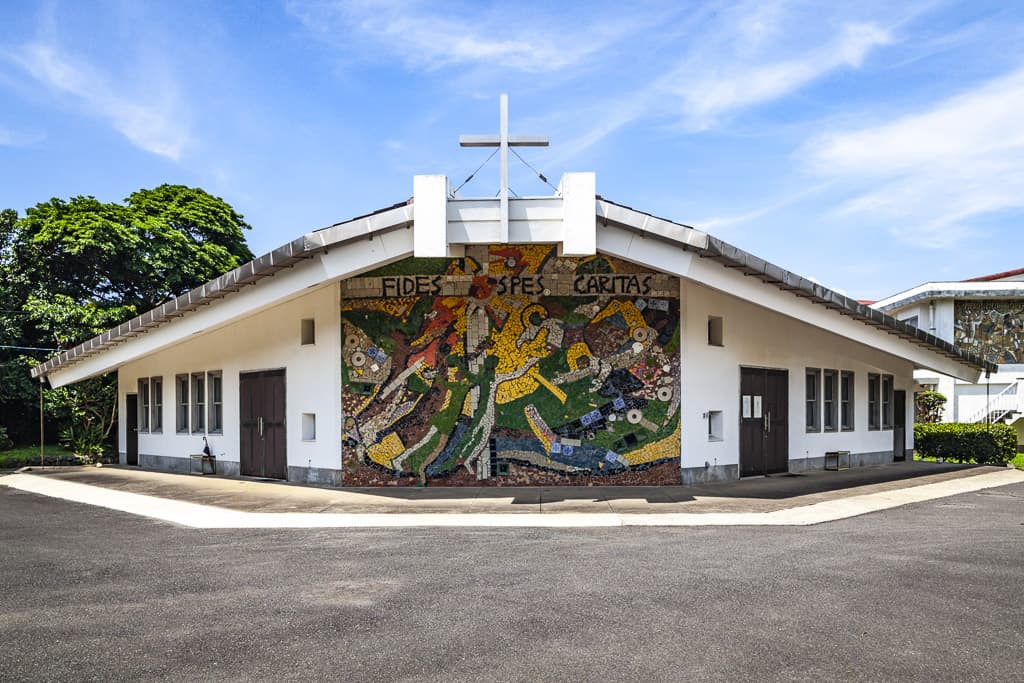
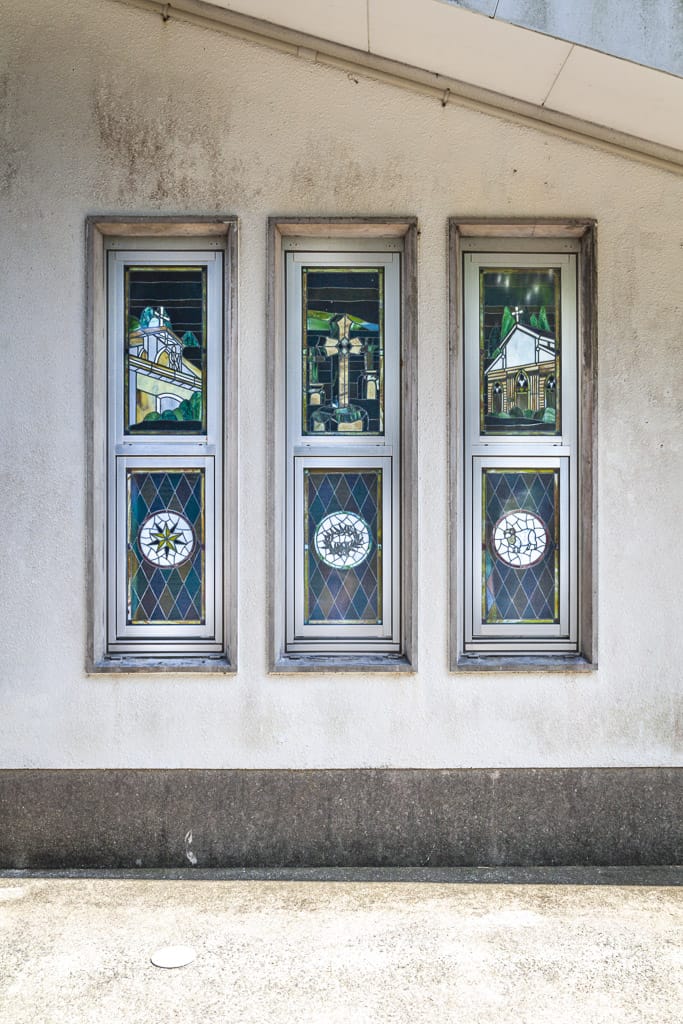
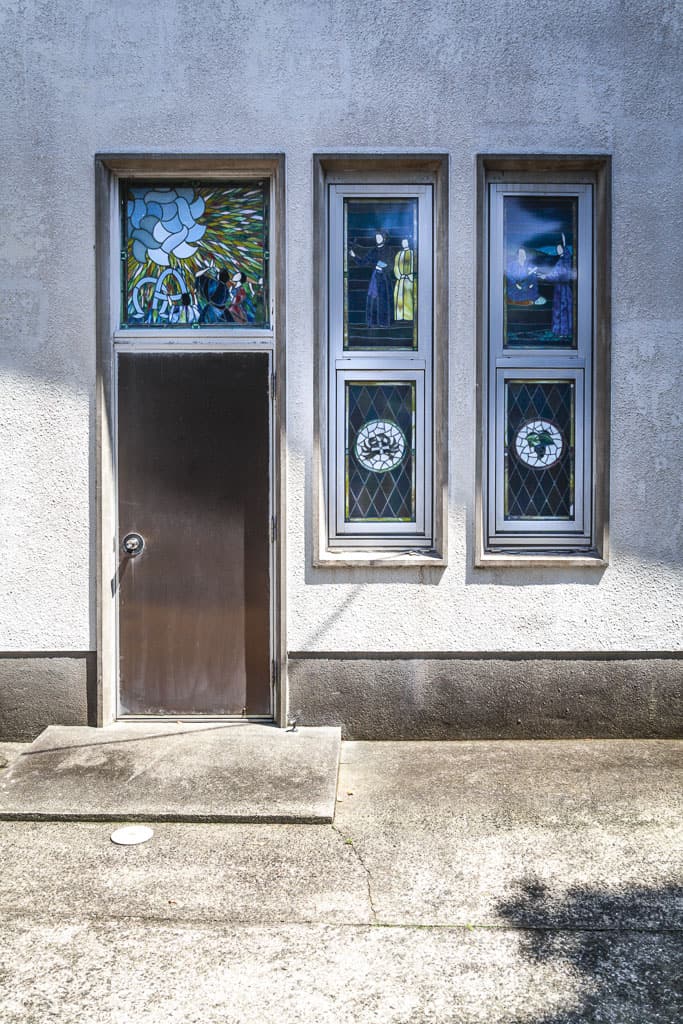
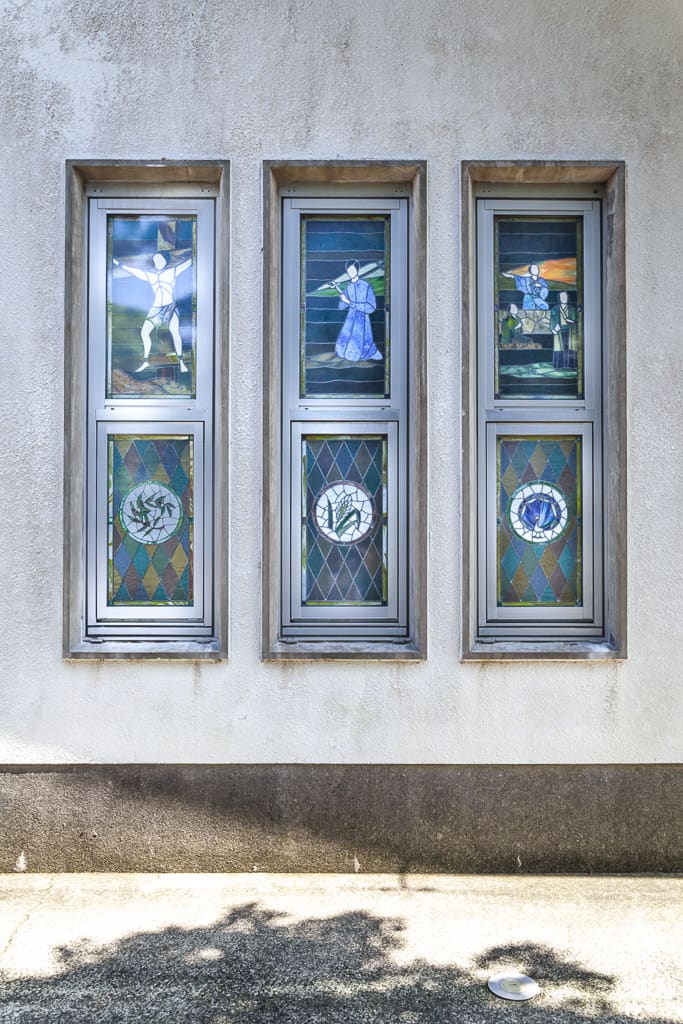
As a devout Christian herself, she’s been honing the craft for 25 years at this workshop, ever since she took part in the renovation project for Miiraku Church shortly after the workshop was established. But besides keeping history alive through her craft, she shares the joy through fun workshops suitable for all skill levels, from a simple keychain in less than 1 hour to a more elaborate table lamp in about 3 hours. I went for the keychain, which was designed as a pretty camellia in bright red, a small and perfect souvenir.
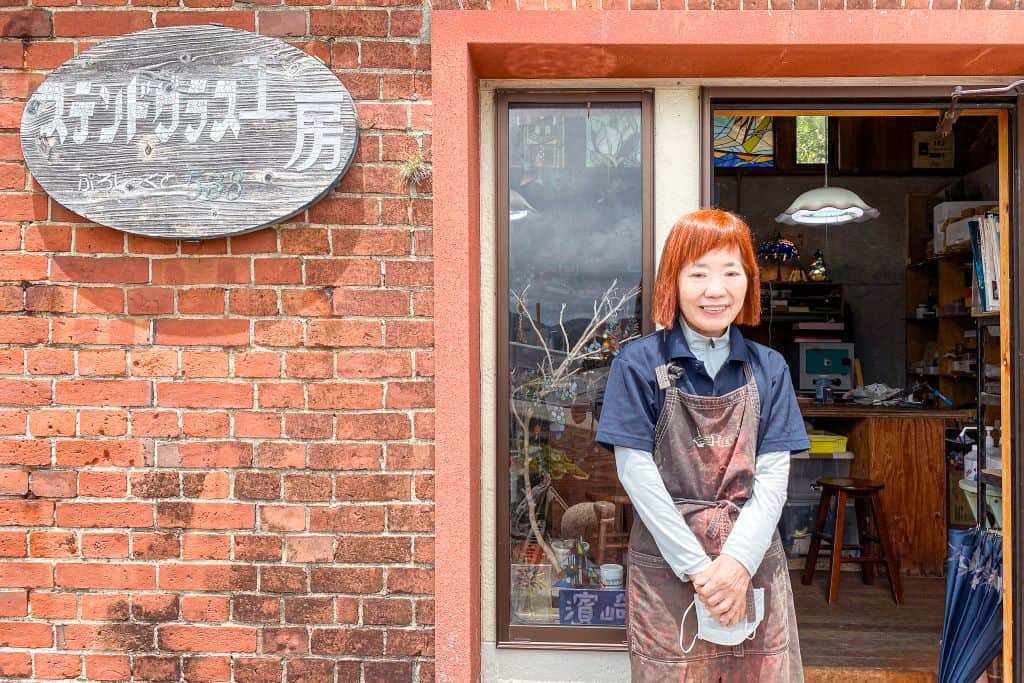
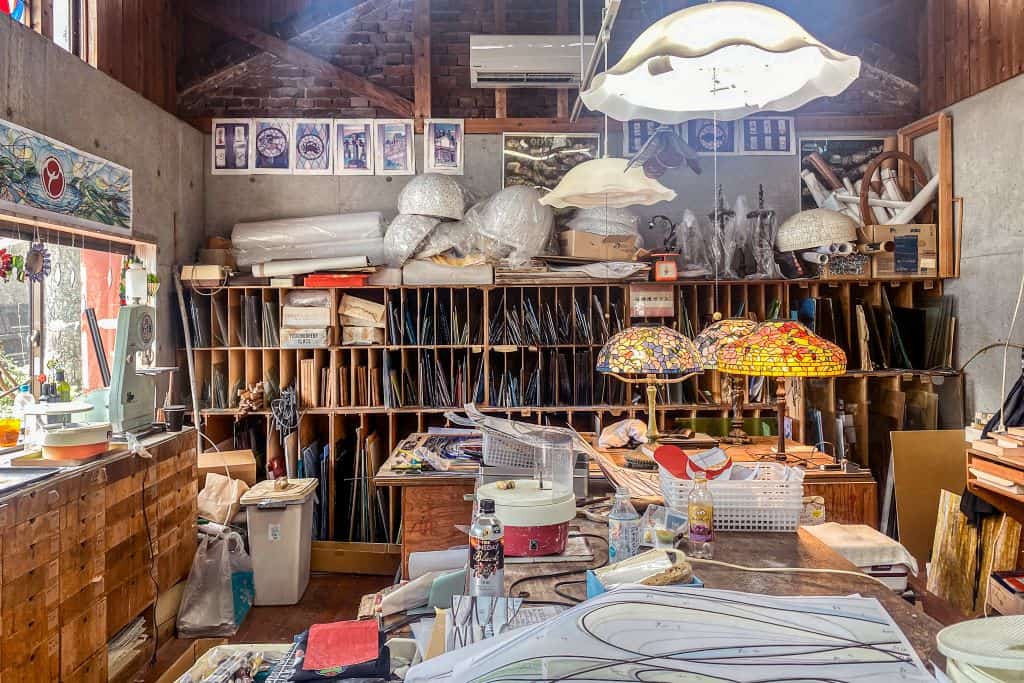
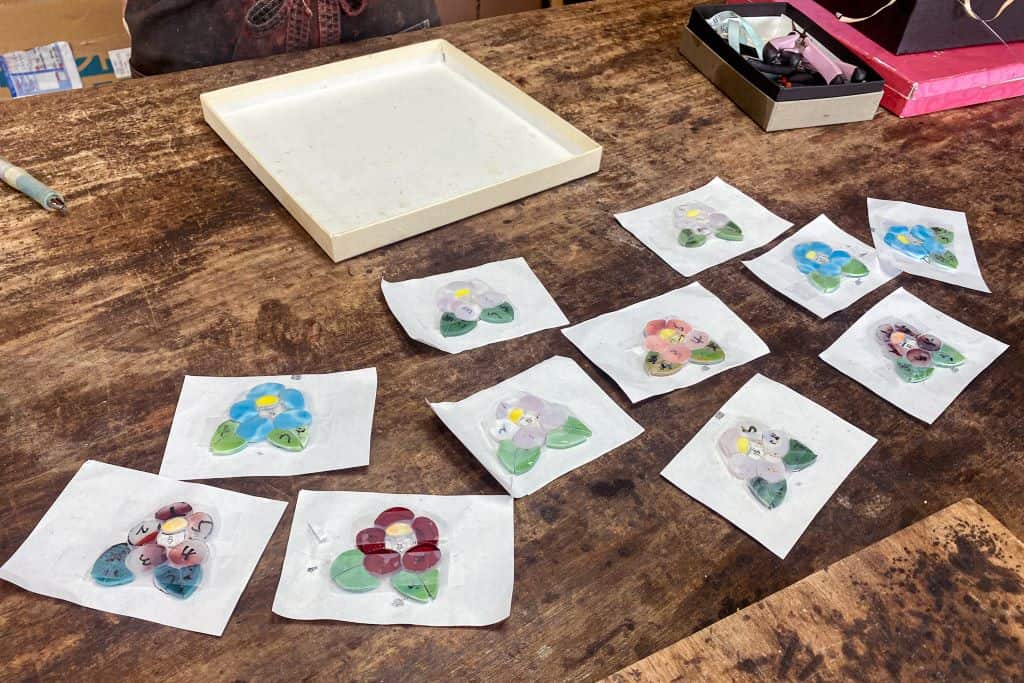
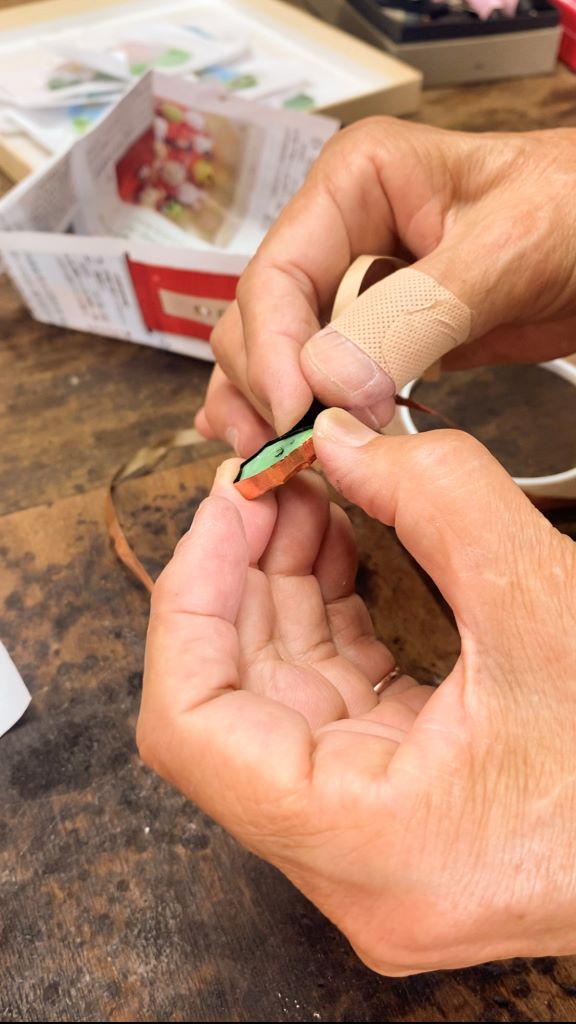
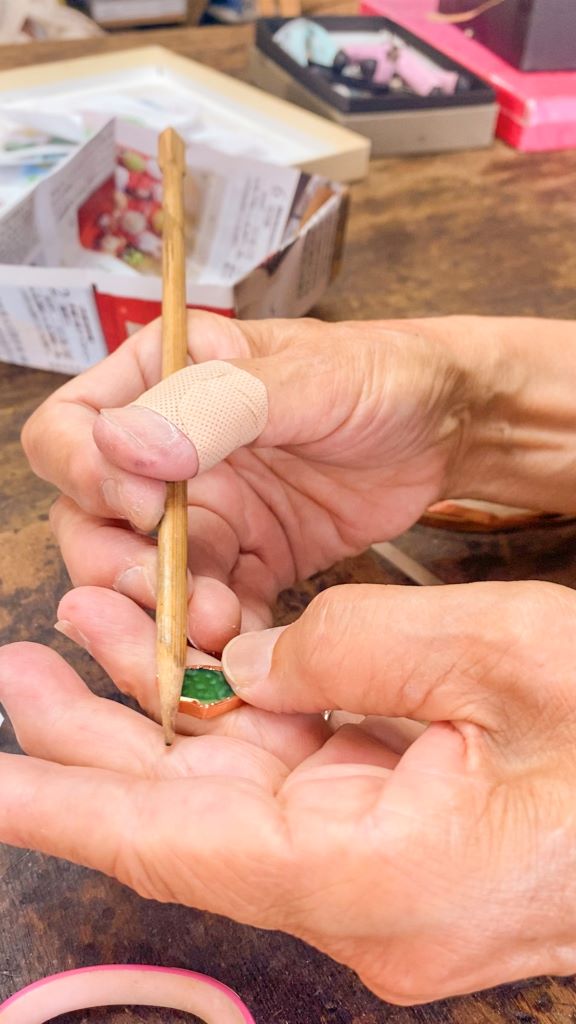
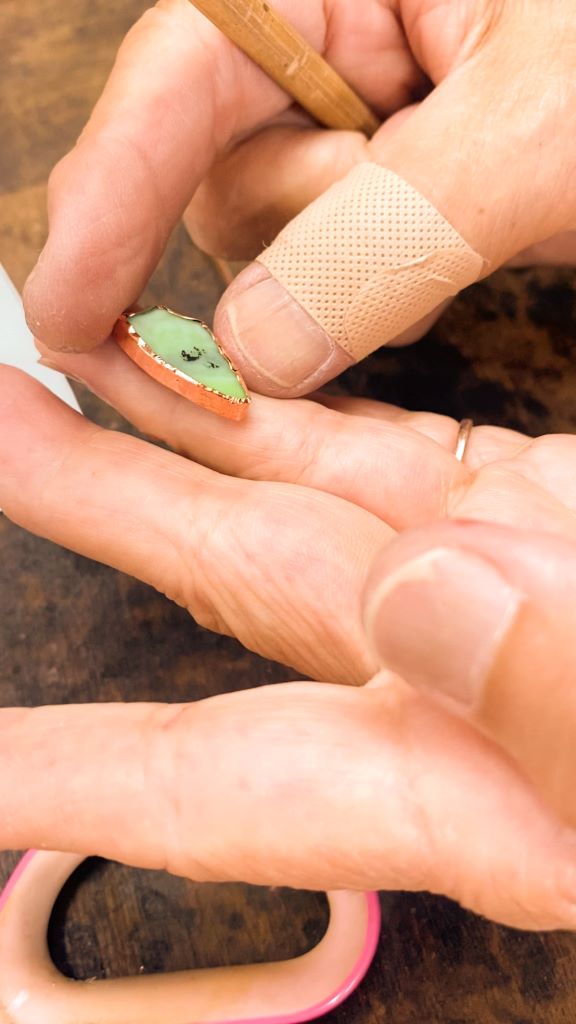
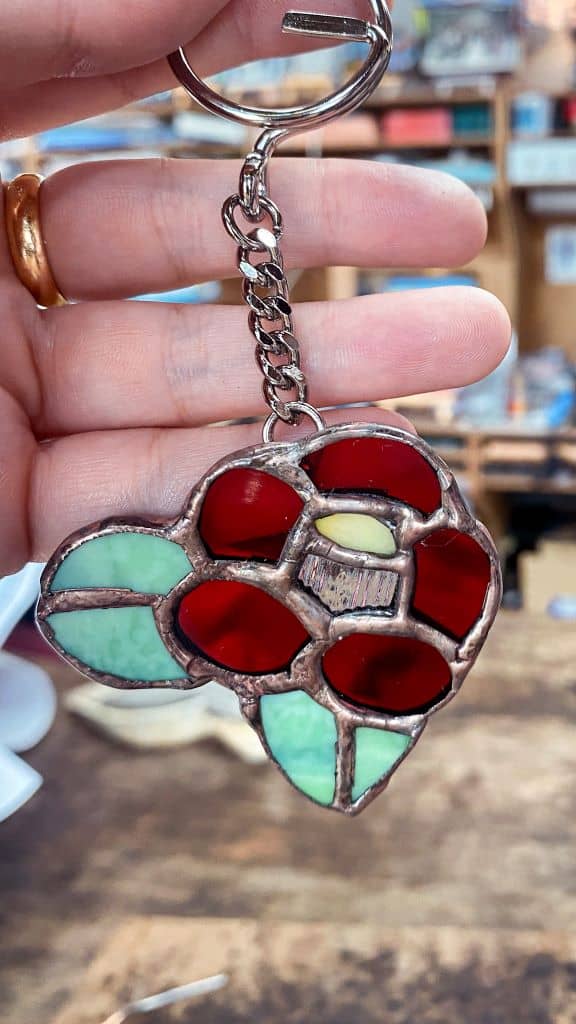
Visit the Stunning Takasaki and Takahama Beaches
Having learned a lot about the island’s history and heritage, it was time to slow down and take it easy. And no better way to do it than basking in the breathtaking landscapes of its beaches.
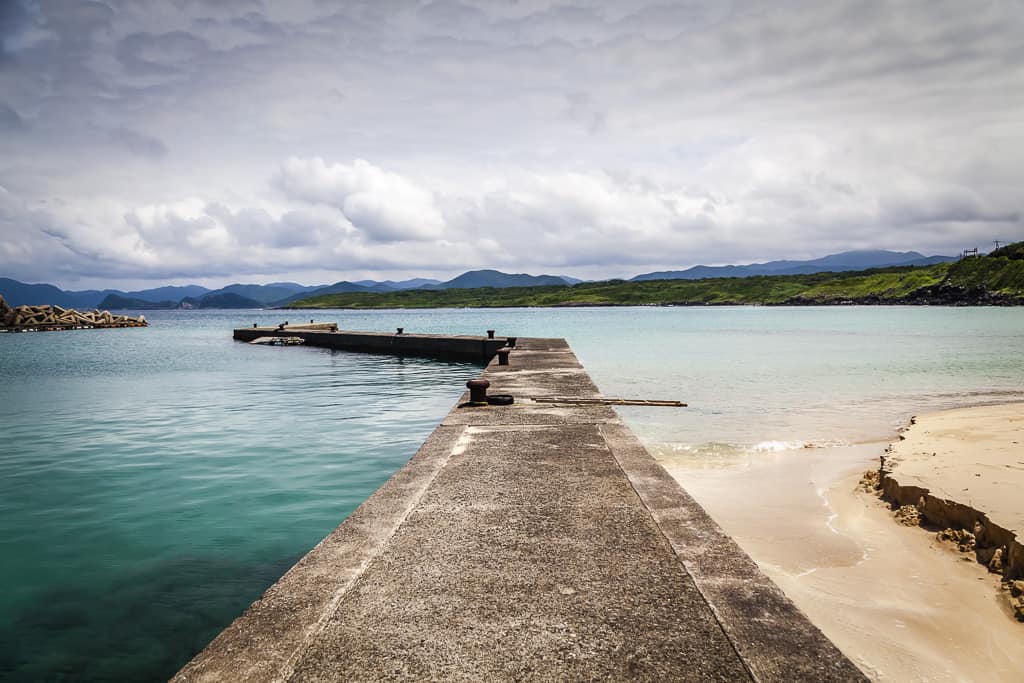
In the close vicinity of Miiraku Church, we can find the pristine Takasaki (高崎) Beach, which rivals in beauty with the more famous Takahama Beach (高浜海水浴場), partially because it’s not as famous as the latter and its waters are more peaceful, ideal to swim relaxedly. Its deep, turquoise, and transparent waters are the most inviting during hot summer days.
However, there’s a reason why Takahama Beach is still the number 1 attraction in the area. After all, it was selected among the best “100 swimming beaches” in Japan by the Ministry of Environment, as well as the “Selected 100 Japanese Beaches” by the Japanese Beaches Central Committee.
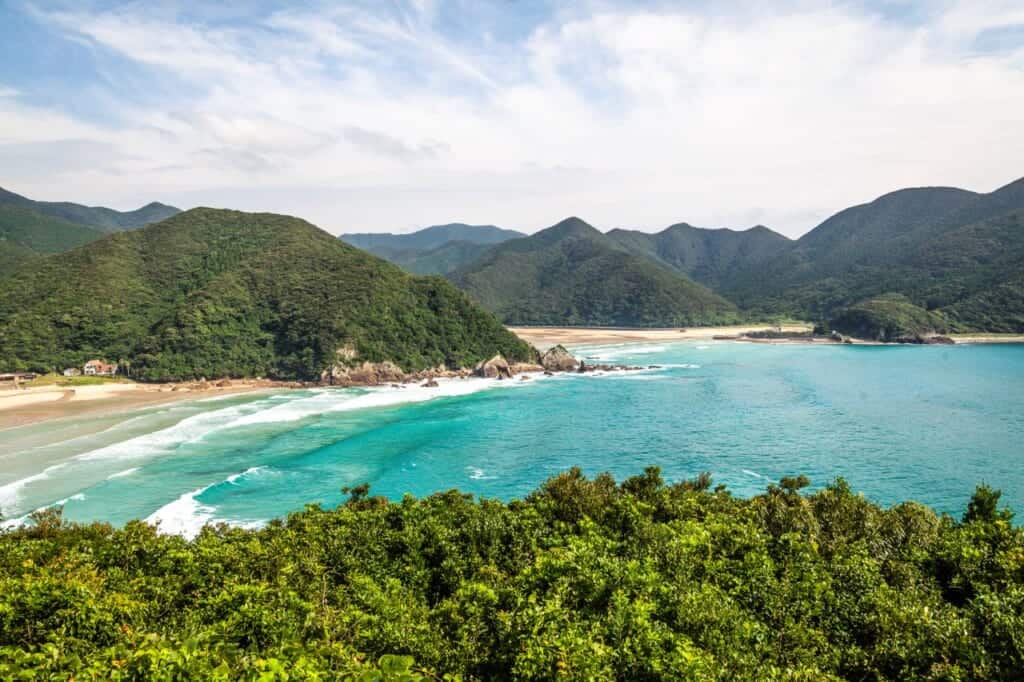
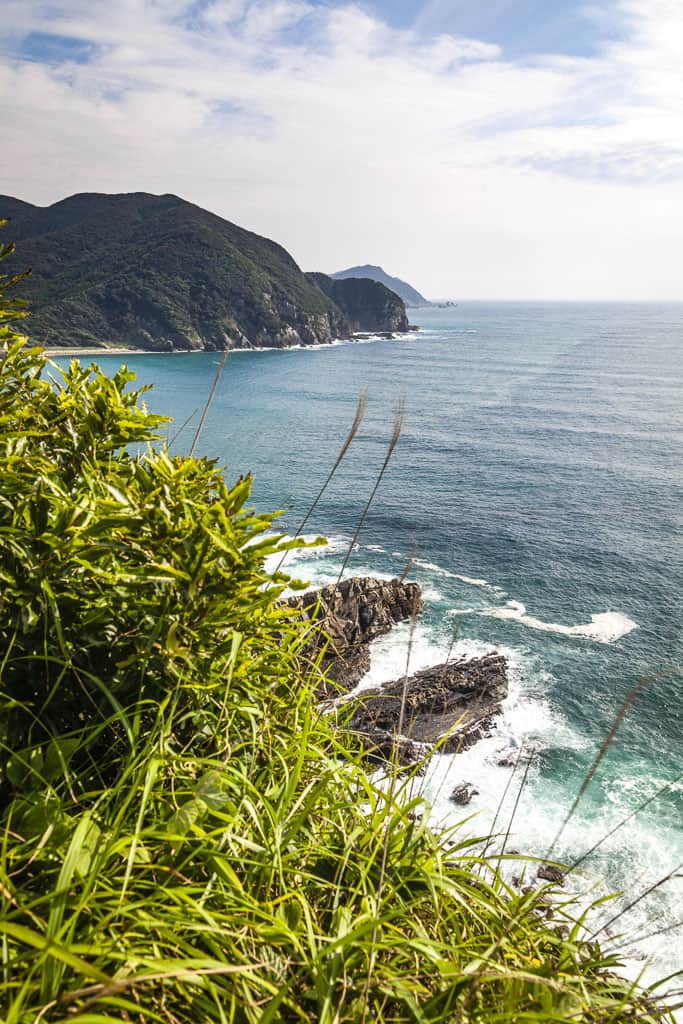
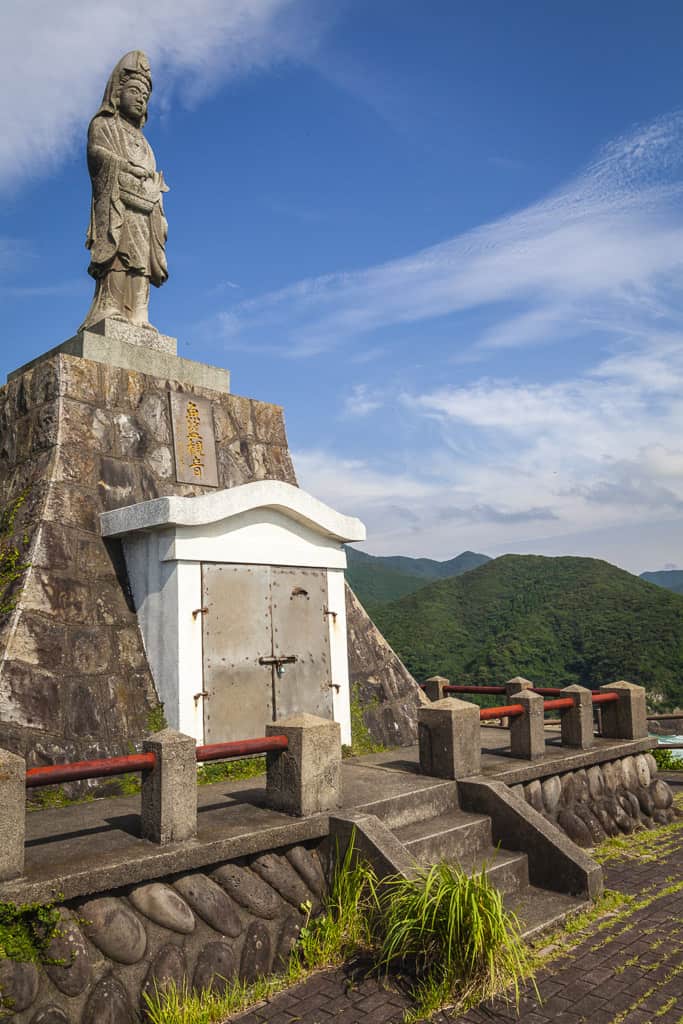
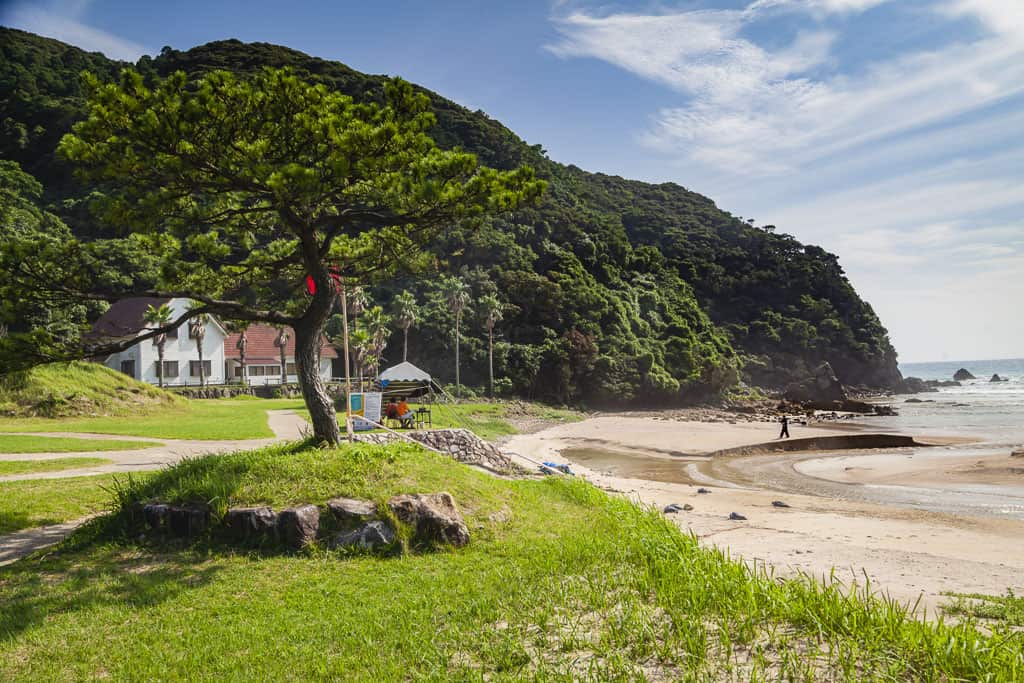
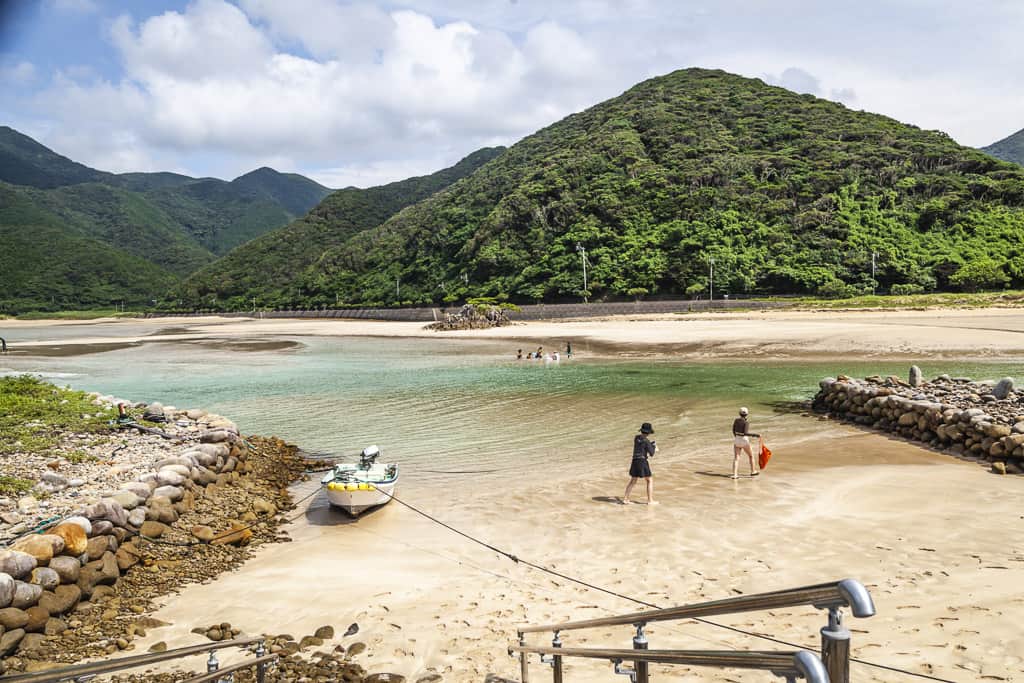
Its white sand and turquoise waters surrounded by lush greenery create a beautiful and unforgettable scenery that truly lives up to its reputation. There’s a nearby hill with a statue of Gyoran-Kannon which offers great aerial views of this beach as well as the neighboring Tontomari Beach, which is almost as pretty but mostly favored by families because of its shallow waters, suitable for small kids.
Family-Style Lodgings and Cuisine at Tamanouramachi Arakawa
In Tamanouramachi Arakawa, a small and quaint fishing village on the western coast of Fukue Island is where we can find one of the most charming and warmest lodgings I’ve ever experienced at the family-owned Minshuku Miyako.
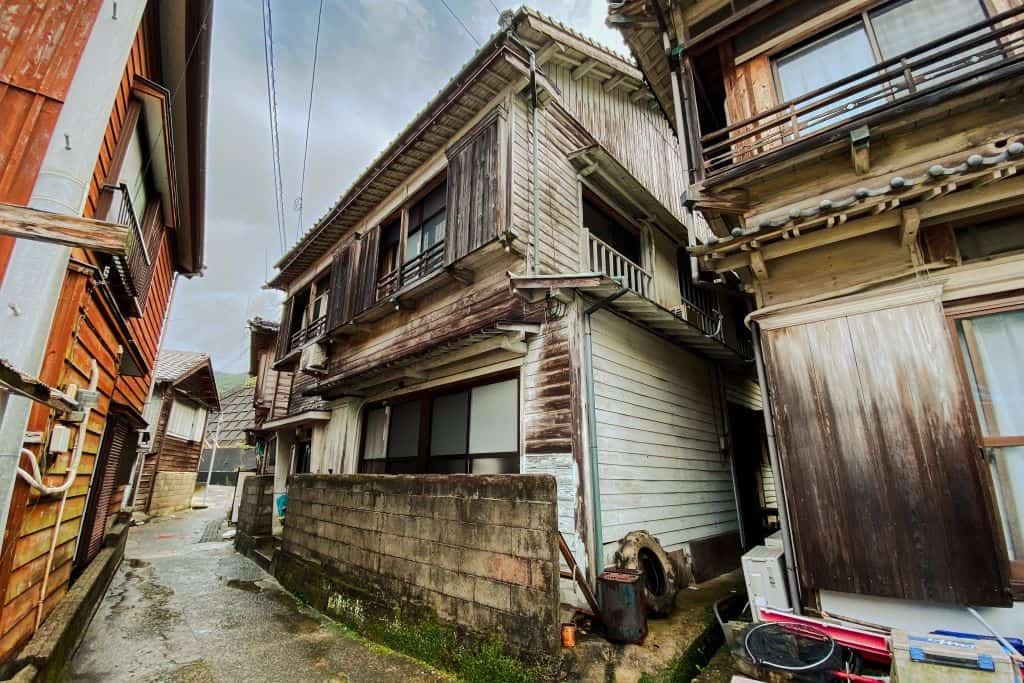
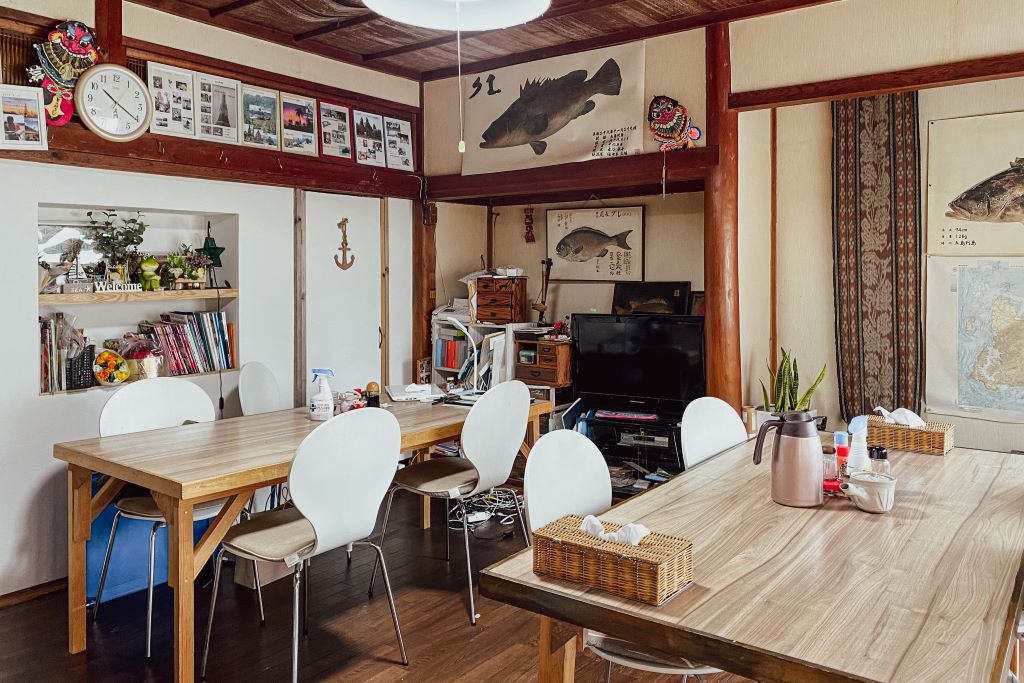
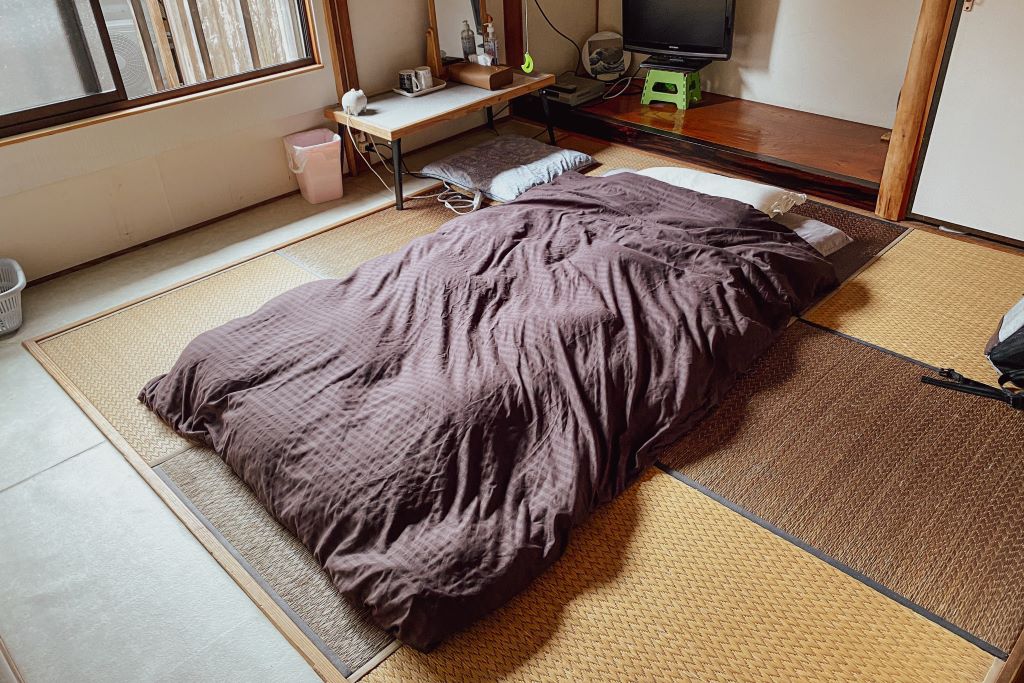
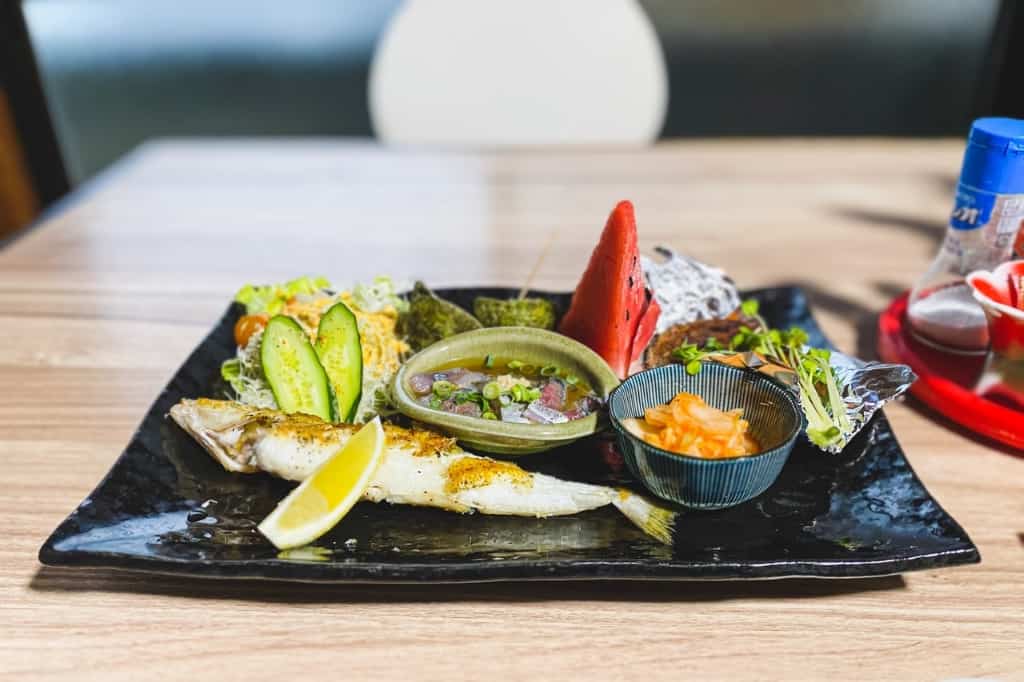
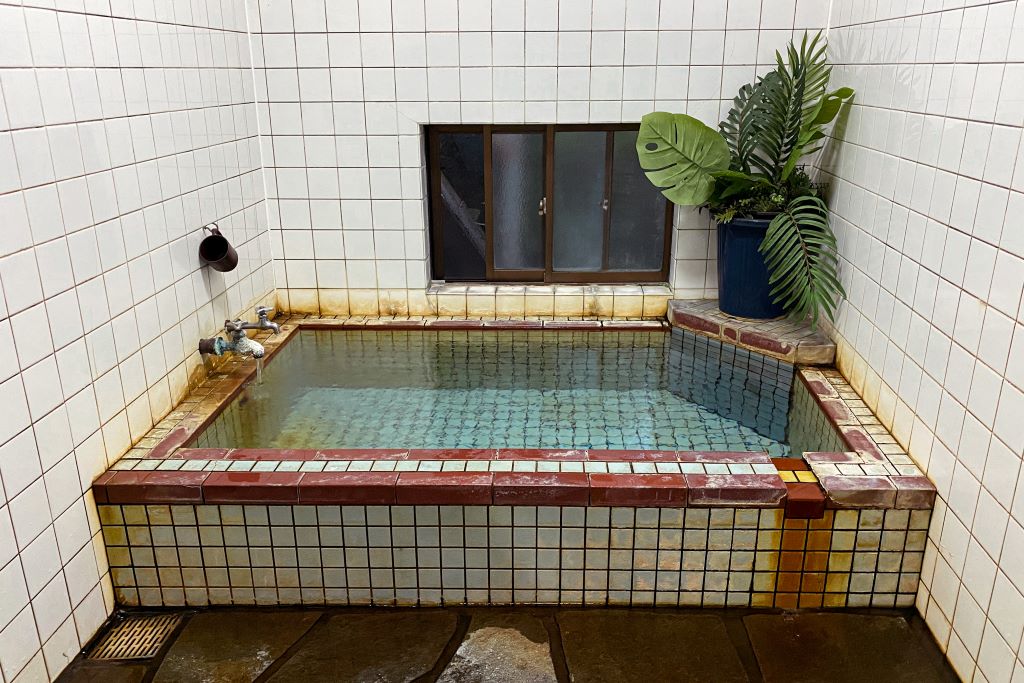
This guesthouse is very popular among fishing enthusiasts as one of their featured activities includes a fishing trip at sunrise on the owner’s boat. If visitors are able to catch fish, the guesthouse owners will gladly cook them. And believe me when I say the cooking at this place is on par with the best restaurants I’ve visited in Japan.
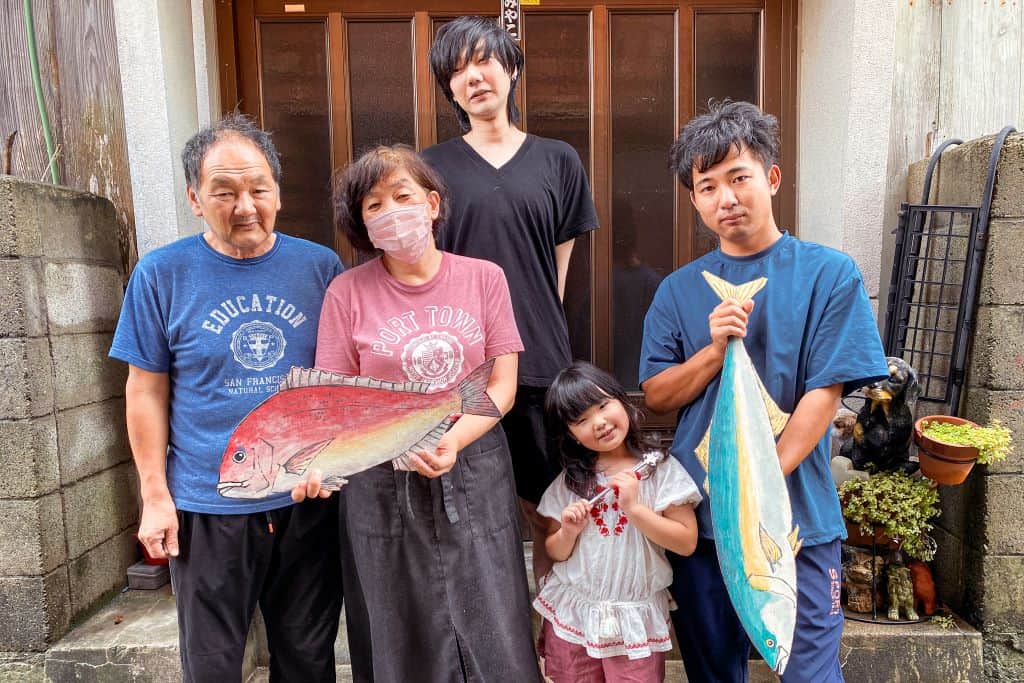
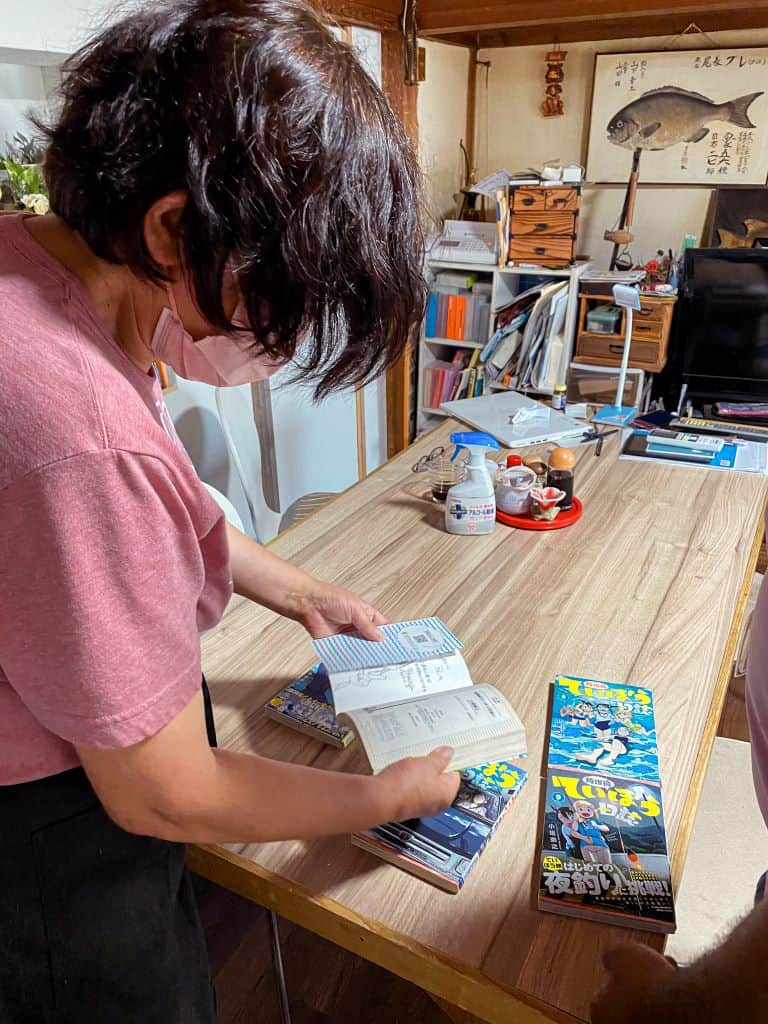
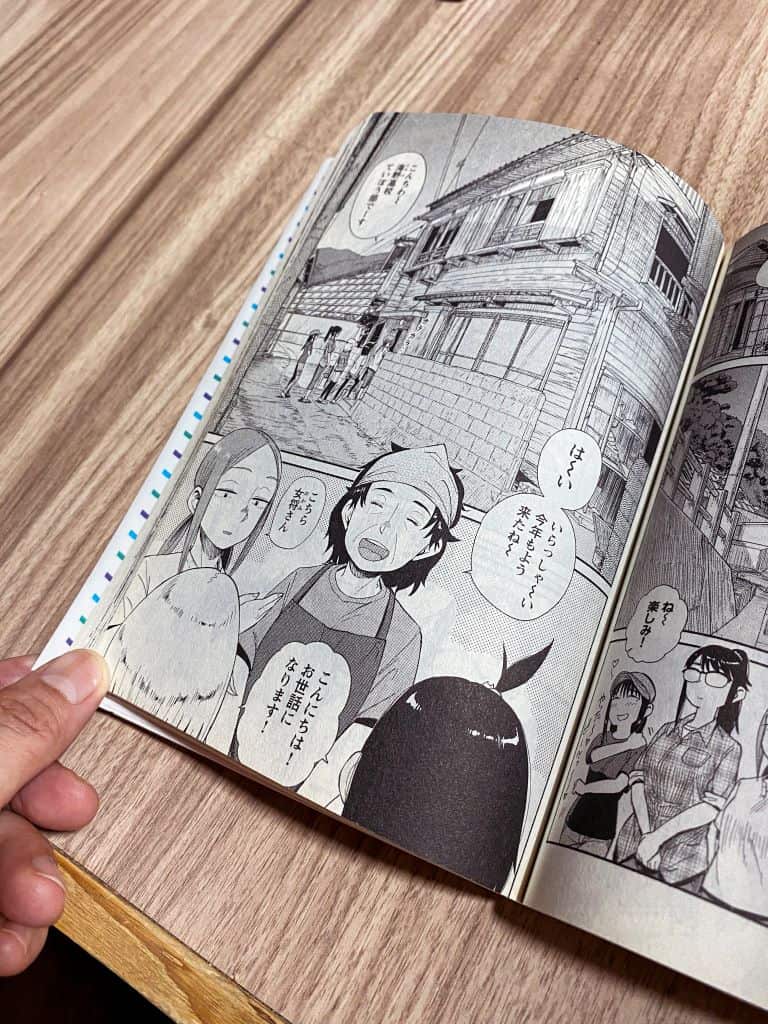
The place has a very warm atmosphere and the owner’s friendliness makes everyone feel right at home during their stay, particularly thanks to the sweet and cheerful Naoko Yamashita. Every day during breakfast and dinner everyone discusses the plans for the day, what activities were carried out, and how the fishing went, creating a family-like feeling even during a short stay.
Togarashi Restaurant: A Spicy Breath of Fresh Air
In the vicinity, Togarashi is a relatively new chic and stylish Chinese restaurant managed by Naoko Yamashita’s younger brother, Osera Suguru. The old building of a closed preschool was renovated two years ago, turning the location into one of the most popular restaurants in the area.
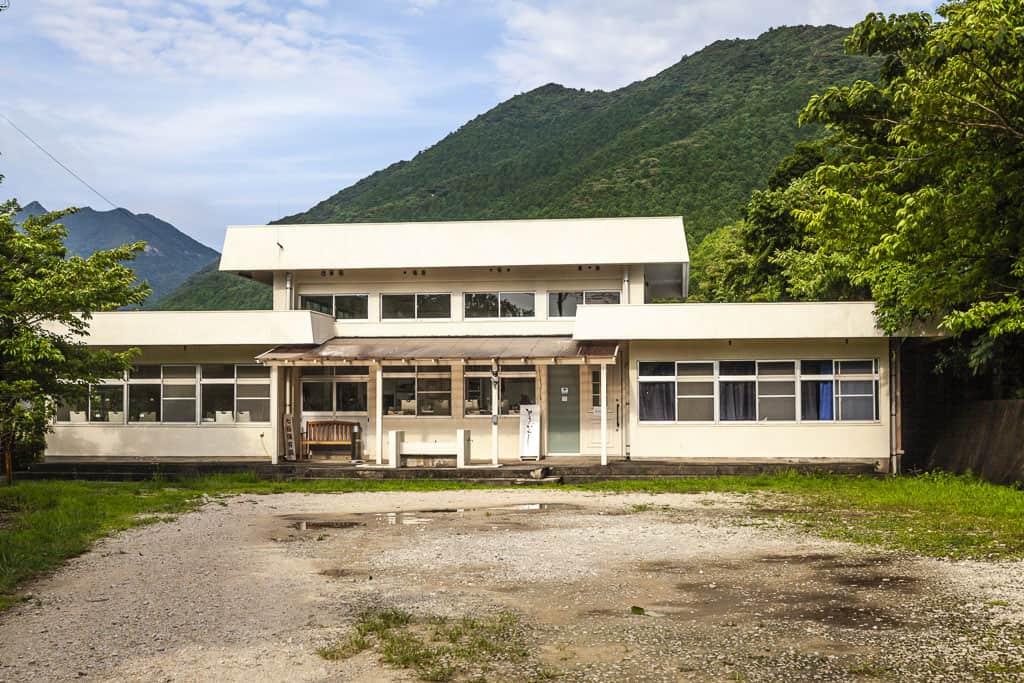
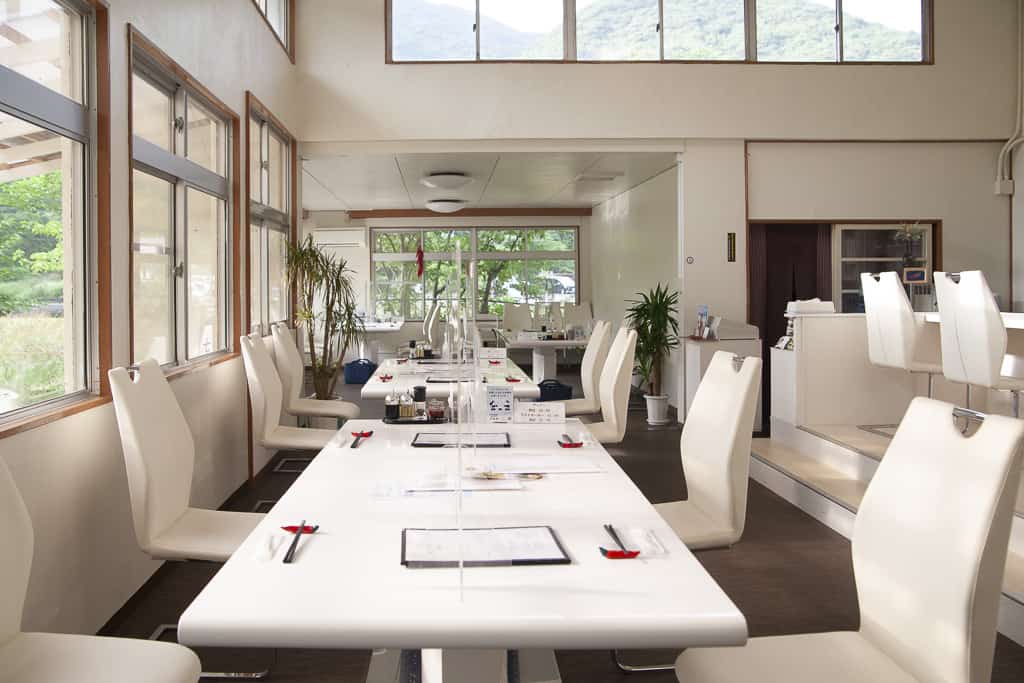
A Traditional Lodging with a Sustainable Mindset
Within the same small village, there’s also Nedokoro Nora, a 100-year-old holiday rental house that manages to reconcile contemporary and traditional styles while keeping a minimalistic vibe that’s still warm and inviting. But its most distinct feature is the lack of an air conditioner, which is a conscious choice for the sake of the environment.
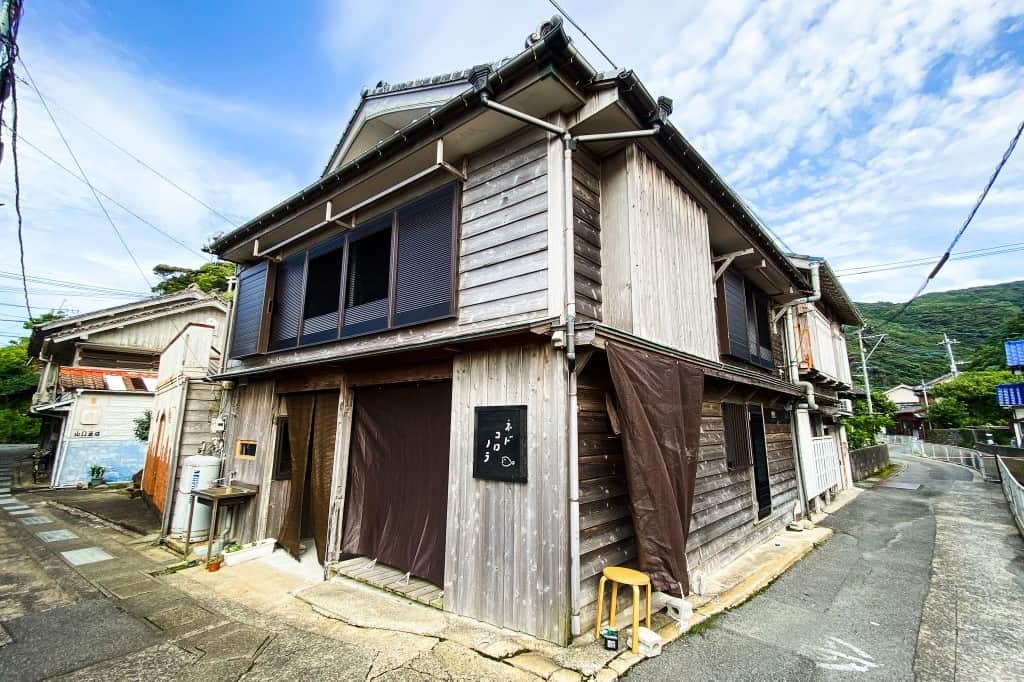
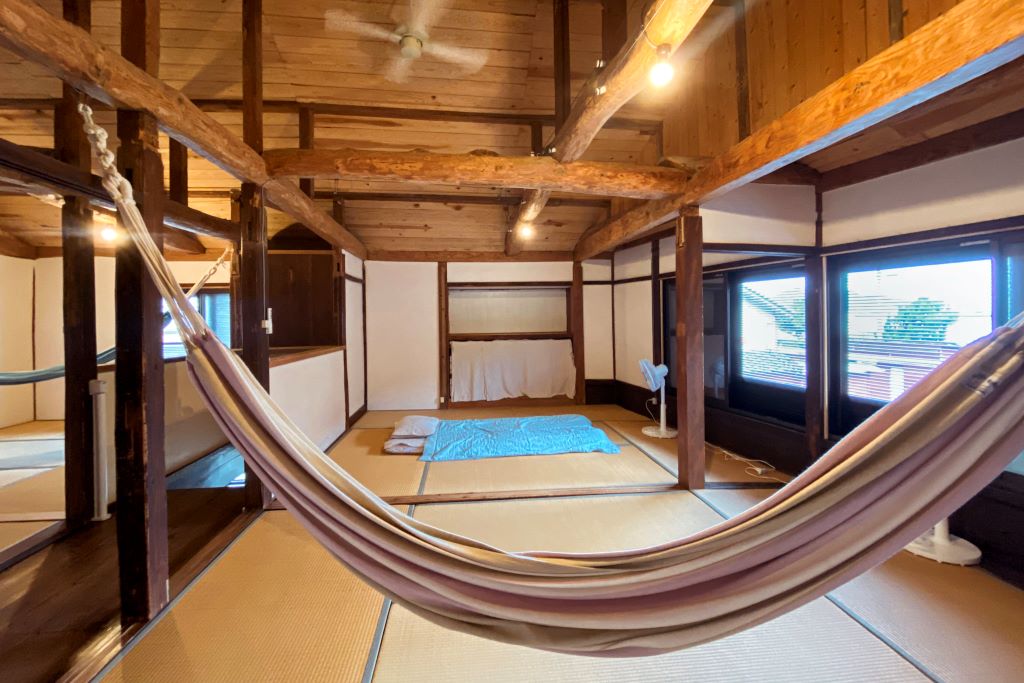
This design was inspired by Yoshiyuki Yamada’s book “A house without air conditioning,” which outlines good design practices to optimize thermal efficiency. For example, curtains that provide shade during the day to avoid excessive heating, are complemented with enough air circulation at night to stay reasonably cool, demonstrating that it’s feasible to survive the summer while reducing the environmental impact of air conditioners.
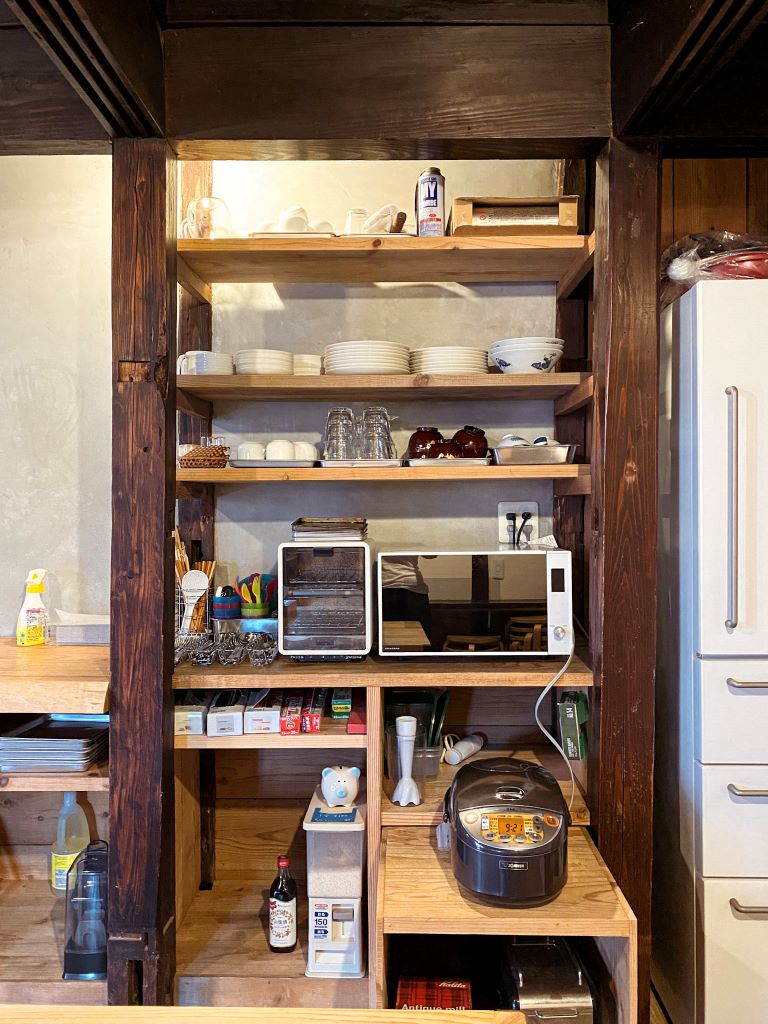
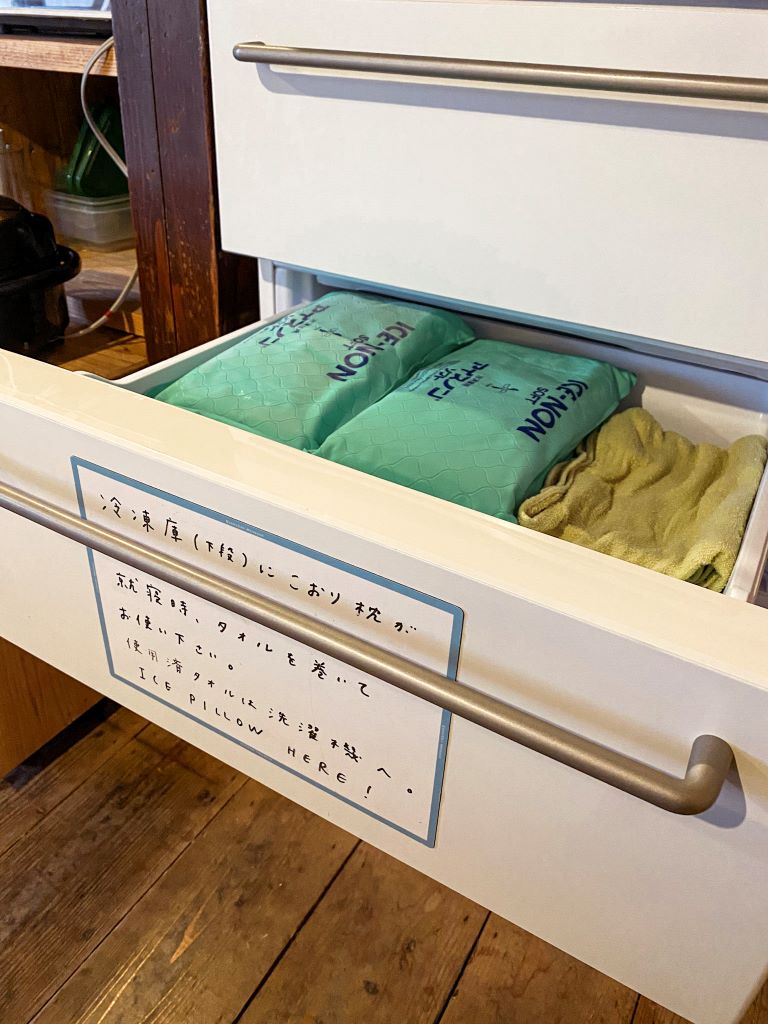
There are several fans in the house, while the fabrics used to cover the futon bedding are specially designed to stay fresh as much as possible. On the other hand, there are ice gel pillows in the fridge for those who need some extra help during the summer’s hot and humid nights. So guests can rest assured the lack of air conditioning won’t be a problem at all with regards to their comfort. A nice highlight of the house is the hammocks which are a great way to relax or even take a refreshing nap.
Getting to Fukue Island
Fukue Island, as well as the rest of the Goto Islands, is easily accessible by sea from Nagasaki via ferry or Jetfoil speedboat. The first option is the least expensive one, but it takes around 3 hours, while the second only takes around 90 minutes. Alternatively, there are also flights available between Fukue and Nagasaki and Fukuoka, taking 30 and 40 minutes respectively.
At a first glance, the highlights of the Goto Islands generally involve gorgeous beaches, lush green sceneries, quiet villages, and fascinating Christian heritage. But going beyond the surface, the fascination over its history easily turns into the most absolute amazement when realizing this is probably the epicenter of what we know today as Japan. Of course, enjoying the natural wonders is a must, but diving into the rich culture of Goto and interacting with its wonderful and warm inhabitants will greatly enrich the experience of the discovery.


